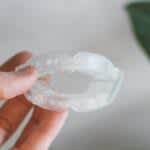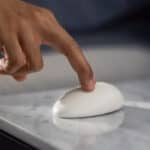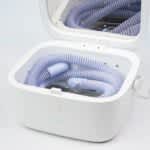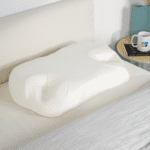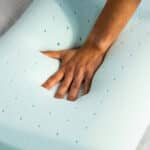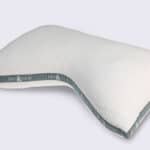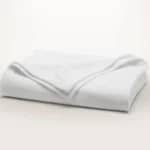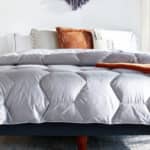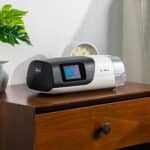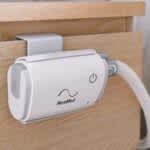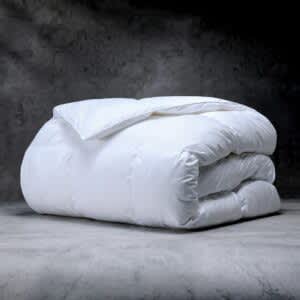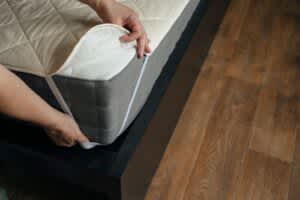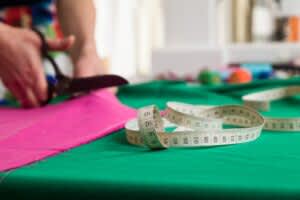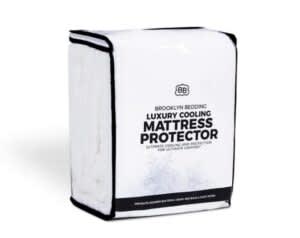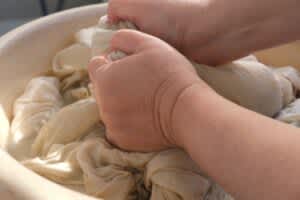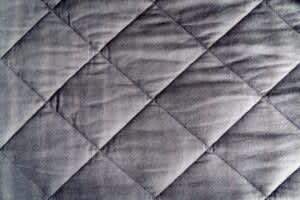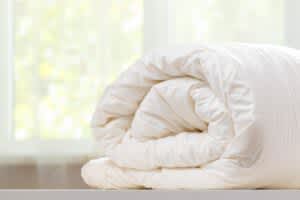Unless you’re an expert in textiles, choosing the right set of sheets can be a confusing task. While comfort is often a deciding factor when purchasing sheets, choosing a set that complements your sleep style is essential, as sheets can play a large role in sleep quality.
Even if you’ve managed to narrow down your choice to Tencel versus cotton sheets, you may still have questions. The two popular fabrics share many common features but also have several key differences. We’ll discuss Tencel and cotton fabrics in detail, comparing and contrasting the two textiles to help you choose the best sheets for your sleep style.
What Are Tencel Sheets?
The term Tencel is a trademarked term coined by the Austrian company Lenzing. Soft and breathable yet highly durable, Tencel sheets are made from wood-based fiber fabrics such as lyocell and modal. The fabric is derived from sustainably sourced trees and requires a complex manufacturing process.
As a result, Tencel sheets tend to be more expensive. However, the higher price tag of Tencel also means higher-quality sheets.
Tencel sheets can differ slightly depending on the type of fiber used in the fabric, but in general, the sheets tend to be:
- Soft and silky
- Resistant to wrinkling and fading
- Moisture-wicking
- Breathable
- Very durable
Breakdown of Tencel Sheets
Sheet Type | Description | Pros | Cons |
|---|---|---|---|
Tencel | Made from a complex manufacturing process that converts wood pulp to spun fibers, Tencel is a soft, breathable, and durable fabric. |
|
|
Are There Different Types of Tencel Sheets?
There are three different types of Tencel sheets: Tencel lyocell, Tencel modal, and Tencel blends. The feel and performance, as well as the fibers incorporated in the fabrics, vary.
- Tencel Lyocell: This type of Tencel is sourced mainly from the wood pulp of eucalyptus trees. Tencel lyocell is usually higher in quality than generic lyocell. Tencel lyocell is especially silky to the touch, but it’s also more sensitive to heat.
- Tencel Modal: Modal typically comes from the wood pulp of beech trees. Like Tencel lyocell, Tencel modal sheets have a soft feel. However, Tencel modal has a bulkier and less silky feel than Tencel lyocell.
- Tencel Blends: Manufacturers also blend Tencel with a variety of natural and synthetic fibers such as cotton, silk, wool, and polyester. Blends combine the qualities of multiple fabrics to enhance the look, feel, and functionality of sheets.
What Are Cotton Sheets?
Natural cotton fibers can be spun into yarn to make many types of materials, including a variety of sheets. Cotton sheets use fibers derived from cotton plants and are typically soft, breathable, and easy to wash.
Cotton sheets are one of the most common and popular types of bedding available today. Because of this, it’s relatively easy to find cotton sheets at a wide range of prices to suit any budget.
The quality and feel of cotton can vary substantially depending on the weave of the sheet fabric. For example, more expensive cotton sheets made from Egyptian cotton tend to feel softer when new. However, even less expensive cotton sheets can soften over time.
Breakdown of Cotton Sheets
Sheet Type | Description | Pros | Cons |
|---|---|---|---|
Cotton | Made from the natural fibers of the cotton plant, cotton sheets are breathable, durable, easy to care for, and can be more affordable than other fabrics. |
|
|
What Types of Cotton Can You Find in Sheets?
Cotton is incorporated into a wide variety of weaves with different features and price-points, including Egyptian, Pima, and upland cotton.
- Egyptian Cotton Sheets: One of the more luxurious options, Egyptian cotton sheets use a special variety of cotton with an extra-long staple. The staple length refers to the length of the individual cotton fibers. The long fibers of Egyptian cotton create an incredibly soft fabric that’s also strong and durable.
- Pima Cotton Sheets: Pima is another variety of extra-long staple cotton. Pima and Egyptian cotton sheets share many of the same features. But while Egyptian cotton is grown along the Nile River in Egypt, Pima cotton is usually grown in the southern U.S., making it more affordable.
- Upland Cotton Sheets: Though upland cotton may be a lesser-known fabric, the majority of cotton fabric produced around the world uses upland cotton. If your sheets are labeled 100% cotton, they most likely incorporate upland. Upland cotton sheets may be long- or short-staple. Though they are usually less expensive than Egyptian or Pima sheets, upland cotton sheets may not be as durable.
What Is the Difference Between Tencel and Cotton Sheets?
Tencel and cotton sheets are both touted for their softness, breathability, and durability. But they differ in their cost and ease of care, among other things.
Tencel vs. Cotton Sheets
Category | Tencel | Cotton |
|---|---|---|
Price | Tencel fabric requires an intensive manufacturing process. As a result, Tencel sheets tend to be pricier than most cotton sheets, except for those made of 100% Egyptian cotton. | Cotton sheets vary greatly in cost depending on the type of cotton and weave. This means cotton sheets come in a wider range of price-points and quality. |
Cleaning and Care | Tencel fabric is more sensitive to heat and requires more delicate care than cotton. It’s best to wash your Tencel sheets in cold water on a gentle cycle and tumble dry on low. You should also avoid using any harsh cleaners such as bleach that could damage the Tencel fibers. | It’s important to follow the recommended care instructions. However, most cotton fabrics can withstand higher heat, including hot water and ironing. |
Wear and Tear | Tencel is known for its excellent durability. With proper care, Tencel sheets should last for many years, resisting thinning, pilling, and fading. | Cotton sheets are generally very durable. They also tend to get softer over time as you use and wash them more. However, less expensive short-staple cotton sheets may be more prone to pilling. |
Feel and Performance | Tencel sheets have a cool, silky-soft feel. Tencel is also resistant to wrinkling, so the sheets stay smooth without the need for ironing. | In general, cotton tends to have a soft feel. But the exact feel of cotton sheets can depend on the type of cotton and fabric weave. For example, Egyptian cotton is soft and cool, while flannel cotton is soft and warm. |
Temperature Control | Tencel sheets stand out for their excellent moisture-wicking ability and temperature neutrality. If you’re a hot sleeper, Tencel sheets can help you stay cool as you sleep. | Cotton sheets typically sleep cool, but once again, the performance depends on the weave. Percale cotton sheets suit hot sleepers, as the fabric is lightweight and breathable. |
How Does Tencel Compare With Egyptian Cotton Sheets?
Egyptian cotton and Tencel sheets are both soft and durable, but Egyptian cotton is easier to care for, while Tencel has a silkier feel. Both options are made from high-quality fabrics and have higher price tags. However, there are several subtle differences between the two textiles.
Cotton, including Egyptian cotton, can withstand higher heat during washing, while Tencel requires gentler care. In contrast, Tencel sheets are generally more resistant to wrinkling due to their silky smooth texture. Tencel sheets also tend to sleep cooler than cotton sheets, making them a good choice for hot sleepers.
Is Tencel a More Breathable Material Than Cotton?
Tencel tops cotton when it comes to breathability. Sheets made from Tencel are incredibly absorbent and breathable. For hot sleepers, this means Tencel can wick away sweat as you sleep and help regulate your body temperature throughout the night.
Can Tencel Be Made Into the Same Weaves as Cotton Sheets?
Both Tencel and cotton can be woven into the same fabric for sheets, combining the best qualities of both materials. Two popular examples of this are sateen and percale sheets. While there are many options for 100% cotton sateen and percale sheets on the market, you can also find sateen and percale sheets that blend Tencel and cotton together.
Sateen sheets tend to have a thread count between 300 and 600, while percale sheets typically have a thread count between 200 and 400. Other weaves, such as Jersey knit sheets, which have the feel of a well-worn cotton shirt, are more commonly associated with 100% cotton thread sheets.
Ask the Sleep Doctor
Have questions about sleep? Submit them here! We use your questions to help us decide topics for articles, videos, and newsletters. We try to answer as many questions as possible. You can also send us an email. Please note, we cannot provide specific medical advice, and always recommend you contact your doctor for any medical matters.





